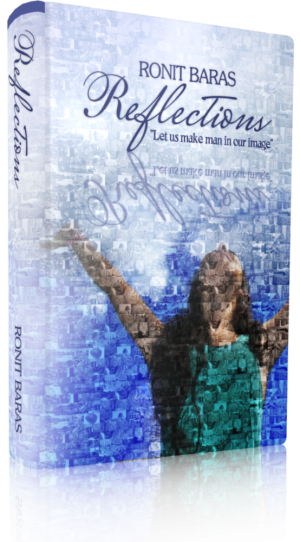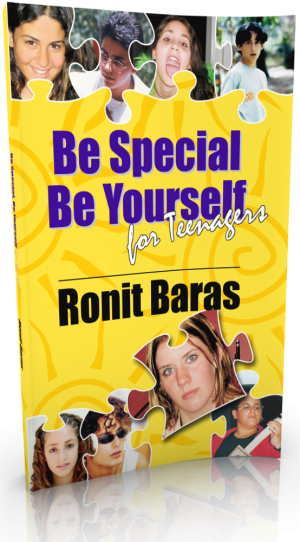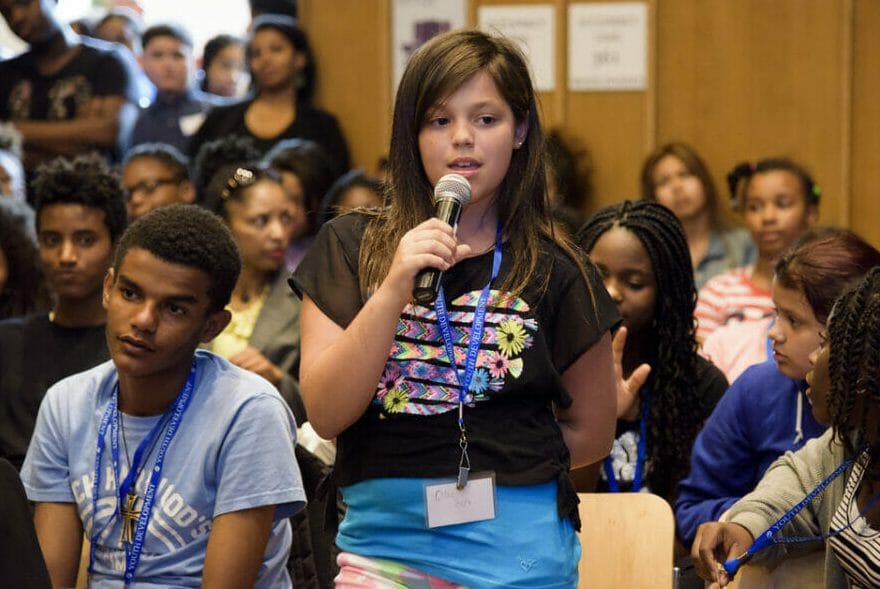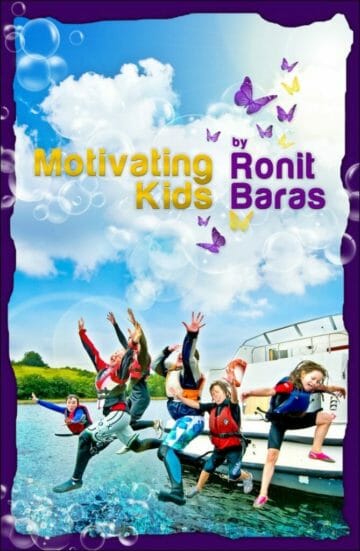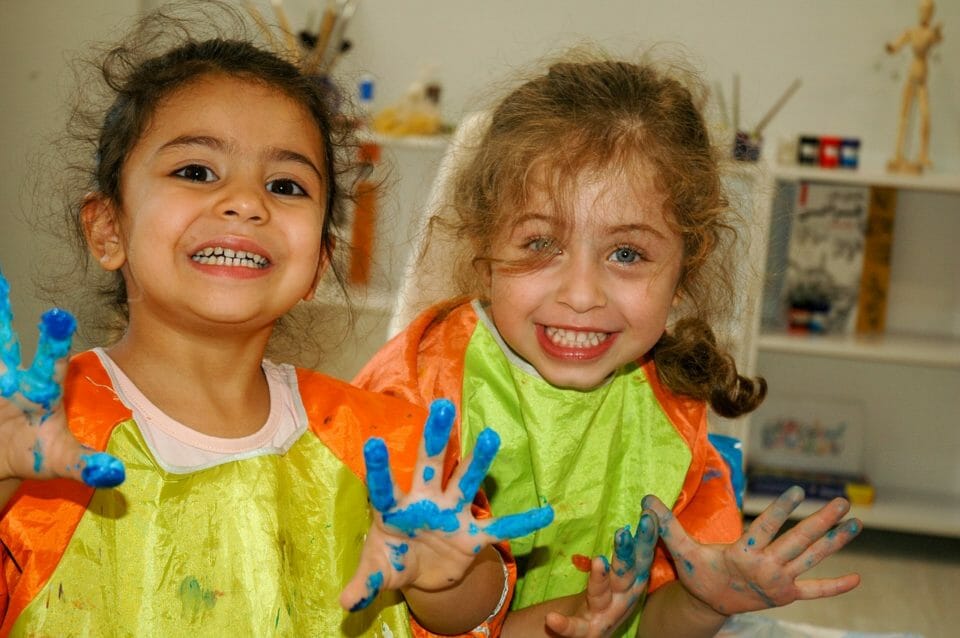
When young kids go to any formal education, their knowledge of colors is checked. Colors are an easy way to check learning and it is possible to start teaching the colors at a very early age. Kids as young as 2 years old can learn their colors and build good learning connections in their brain.
The earlier they start, the better it is for their learning abilities. So how to teach kids colors?
It is very important to understand the process of learning when teaching kids abstract concept like colors. For kids to recognize a color, they need to have accumulated hundreds of information pieces that help them define that color concept.
The understanding of what this thing is not is greatly helpful in forming a concept. We call these “negative examples”. When you show a kid an apple and say the color is green, it is possible for the kid to remember the shape of the apple and think this is the meaning of green. You must also show an apple that is not green.
Through our examples, we need to help our kids learn that color has no shape. Green can be an apple, a fabric or a leaf.
Through our examples, we need to help our kids learn that color has no size. Green can be small, it can be big and it can be huge.
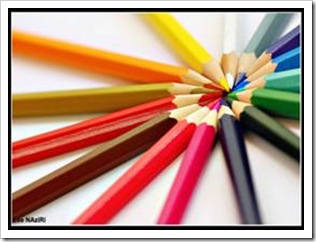 Through our examples, we need to help our kids learn that color can be seen outside or inside. Green can be on a tree and it can be in the closet.
Through our examples, we need to help our kids learn that color can be seen outside or inside. Green can be on a tree and it can be in the closet.
Through our examples, we need to help our kids learn that color can have different textures. Green can be smooth (apple) or rough (grass).
Do you get the idea?
Every time you show your kids something green but with a different quality to it, you refine and enhance their understanding of the concept. The more examples you expose your kids to, the better they will understand the concept.
Teaching kids colors is an easy task because we do not really need to buy anything to do it. We only need persistence and repetition, two free skills that will get you a long way as a teacher.
How to teach kids colors
- When you show something, say a red balloon, use the word “color” together with the name of the object. Instead of saying “this is red”, it is better to say “this is a balloon and its color is red”.
- Do not test your kids before you are done teaching. It will put them off and prevent them from learning.
 When teaching kids colors, remember that receptive language comes before expressive language. Kids will be able to point out the right color long before they can say its name. At the beginning of the process, ask them to pick up all the blue pieces. If they do not know, show them a few, until they catch on.
When teaching kids colors, remember that receptive language comes before expressive language. Kids will be able to point out the right color long before they can say its name. At the beginning of the process, ask them to pick up all the blue pieces. If they do not know, show them a few, until they catch on.- Stick to the main colors – Red, Blue, Yellow, Black and White – and only later add the other colors.
- It is better to dedicate time to each color separately. Having “Green week” or “Blue week” is wonderful and works magic in teaching the colors. Usually, when teaching colors over a whole week, the concept is learned very well. As I said before, the more you repeat it, the better it is and if you do it over one week, it is easy to reach high numbers of experiences and exposure to one color.
- Experiencing colors in different ways helps carve the concept in the brain. When learning colors, kids can experience the colors through all their senses – sight, sound, smell, taste, touch – the more experiences they get, the easier it is to remember. Be creative and come up with unusual ideas for how to teach kids colors.
84 ideas for teaching kids colors
- In the week of a color, get your kids to dress in clothes of that color
- Make jelly in the week’s color
- Use plates in the week’s color
- Teach your kids to wrap gifts with gift wrap of the week’s color
- Use cups in the week’s color
 Put a bit of food color in their bath tab or just buy bubble bath in color (it contains food color anyway)
Put a bit of food color in their bath tab or just buy bubble bath in color (it contains food color anyway)- Let your kids cut out paper in the week’s color
- When teaching a color, bring cordial in that color to drink that week
- Make muffins with a bit of food color on that particular day
If you are thinking by now about the effects of food colors, just buy a natural one and relax about it. Unless your kids are seriously allergic to food colors, using small amounts will make no difference to their health, but it will be very good for their learning. - When teaching red, eat strawberries
- On black week, eat licorice
- On black week, make licorice spiders
- On brown week, eat chocolate (yum)
- Ask your kids to find something in the color you are learning that week in your wardrobe
- On each color week, ask kids to cut out items in that color from a magazine
- On blue week, play with water and talk about living things in the sea
- Make been bags in the color you are learning this week
- On yellow week, eat mangoes
- When teaching blue, let kids play with a blue highlighting pen
- When you teach the colors, say “yellow like the sun”, “blue like the sky”, “brown like your skin” and try to stick to the same examples
- On black week, eat blackberries, black sesame or poke the little black seeds off Turkish bread
- When teaching red, bring lipsticks and give the kids to play with them and make kiss stamps on paper
- On green week, eat green apples and cucumbers
- On brown week make cookies with the kids
- When teaching orange, eat oranges and carrots
- When teaching green, go outside and collect green leaves
- When teaching yellow, do activities about the sun
- On red week, eat watermelon and tomatoes
- When teaching yellow, use a yellow highlighting pen
- If you have a bed sheet in the color you are teaching this week, use it as a tent, a robe or a picnic cloth
- On white week, make origami from white paper
- Use nail polish in the color of the week. Kids love nail polish and you can find nail polish in any color you want
- Get hair spray in the week’s color
- When teaching red, talk about love and do activities with love hearts
- On white week, cook rice with the kids
- On each color week, play “I spy with my little eye something in the color…”
- On brown week, make brownies
- On yellow week, make lemonade with the kids
- On brown week, paint with different shades of mud
- On yellow week, buy a pineapple to eat
- On brown week, play with makeup
- On each color week, use stickers in that color
- On green week, eat lettuce and green grapes
- On red week, eat red capsicum
- On pink week, go out and get some pink fairy floss
- When teaching the colors, sit with your kids, look at magazines and talk about things in different colors
- On red week, eat cherry tomatoes
- On red week, ask your kids to find all the red Lego parts (do the same with each color week)
- On each color week, bring spray paint (like these) to play with – always supervise your kids and do it outside the house
- When teaching colors, bring books about colors from the library
- On green week, talk about nature and plants and plant something in your garden patch
- On brown week, talk about sand and play in the sand pit
- When teaching colors, let your kids paint with finger paint of that week’s color
- On brown week, put potatoes in water and watch them grow
- When teaching color, you can paint salt with Tempura paint (it is a powder you add to the salt and it colors the salt)
- In green week, use a green highlighting pen
- Bring home ice cream in the color you are learning that week
- On green week, eat avocados
- On yellow week, do art and craft about bananas
- On yellow week, eat bananas
- Make dough in the color of the week and allow your kid to play with it
- Bring different shades of the same color and ask the kids to draw with many colors of red, many colors of green, etc
- After teaching black and white separately, have a black-and-white day
- On black and white day, teach about zebras
- On black and white day, teach about cows
- On black and white day, bring black and white fabric to play with
- On black and white day, use cut out black paper to paste on white paper
- On gray week, talk about gray clouds
- On gray week, do activities about elephants
- On gray week, do activities about rhinoceroses
- On gray week, watch “Dumbo”
- When you are done with all the colors, teach silver and gold and explain that they are also kinds of metals
- When teaching silver and gold, do activities with coins
- Eat chocolate coins on gold week
- When teaching silver and gold, show kids jewelry in silver and gold
- Use glitter on silver week
- When you have finished all the colors, do activities about the rainbow – stories, drawings, science…
- When you have finished all the colors, replay some of the games, like “I spy” using different colors
- When you have finished all the colors, work on mixing them – mix the dough and see what colors will comes out
- When you have finished all the colors, mix cordials and see what color comes out
- When you have finished all the colors, talk about chameleons
- When you have finished all the colors, make nice mocktails (“virgin” cocktails) with cordial and fruit juices in transparent glasses to enjoy all the colors
- When you have finished all the colors, play “catch” with the bean bags and call out the colors of what you are throwing or catching
- When you have finished all the colors, eat bread or cake with colorful sprinkles
Remember, the more you talk about colors, the easier it will be for your kids’ brains to store the information and later use it.
Kids do not learn their colors from the air. They are exposed to colors and learn them from their parents and teachers. Home is a wonderful place to teach kids colors. The earlier your kids know their colors, the more connections they have in their brain and the more advanced they will be.
Colorful teaching,
Ronit
 When teaching kids colors, remember that
When teaching kids colors, remember that  Put a bit of food color in their bath tab or just buy bubble bath in color (it contains food color anyway)
Put a bit of food color in their bath tab or just buy bubble bath in color (it contains food color anyway)



